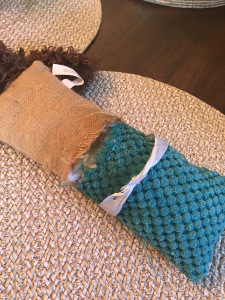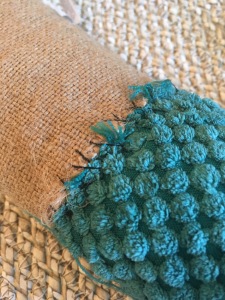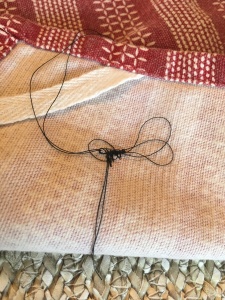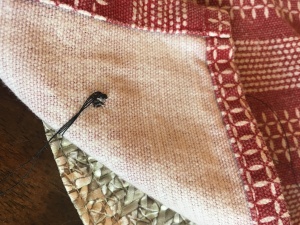It all started with an idea, and a need to be able to sew. I knew this skill would serve me later in life and come in handy, then I remembered a pin I made back in my early university days to make a t-shirt quilt and there it was: my brilliant idea for a learning project and I couldn’t have been more excited!!

I started off by testing out my hand-sewing skills and after a few trial and errors and re-watching a couple of videos, I felt like I had the hang of it. To begin, I know I was reliant on my mother for reassurance because as noted in other blogs, I am a slight perfectionist…I crave perfection and the idea that I can learn from making mistakes is absurd. If I make mistakes often enough, I will quit. It’s been my nature from a young age, and this project really challenged me to be okay with making mistakes, and learning from those mistakes. Beginning with hand-sewing was a slow and confidence building technique I needed to start this massive project! The great thing about hand-sewing was it was easy to fix mistakes and redo stitches. I was able to do this quite a few times until I felt like I had gained a comfortable understanding of threading a needle, making a stitch, and sewing buttons.
 Then came the real test. I began my quilting process. I did not expect there to be as many steps as there were and beginning on the sewing machine was terrifying and infuriating. I know when I get frustrated, I need to step away. The sewing machine was frustrating and annoying to figure out, but with some help from Youtube and my mother, I got the hang of the ancient machine. What I don’t think I mentioned in my blogging was that I tapped into my school resources and borrowed a sewing machine from the school. SO MUCH EASIER!!! I am so grateful l did this, as I am confident my quilt would not have turned out as nicely and I would have ran into a lot more problems and would have needed to troubleshoot a lot more.
Then came the real test. I began my quilting process. I did not expect there to be as many steps as there were and beginning on the sewing machine was terrifying and infuriating. I know when I get frustrated, I need to step away. The sewing machine was frustrating and annoying to figure out, but with some help from Youtube and my mother, I got the hang of the ancient machine. What I don’t think I mentioned in my blogging was that I tapped into my school resources and borrowed a sewing machine from the school. SO MUCH EASIER!!! I am so grateful l did this, as I am confident my quilt would not have turned out as nicely and I would have ran into a lot more problems and would have needed to troubleshoot a lot more.
I had to select my shirts, and then cut them all, which was again super time-consuming. It was at this point in the project that I was questioning my idea and questioning whether I would have enough time to finish. I used my grandma’s tools and advice for cutting and interfacing the t-shirts. In this, I also learned that I like to take a lot of different ideas for how to accomplish a task, and work it into something that makes sense to me. I received advice from my grandma, ladies at the quilt shop, and the internet. From these sources, I combined methods to complete my quilt in a way that made the most sense to me. Having advice from so many sources could get confusing, but I also enjoyed having different options and ideas for how to complete this quilt successfully.

When I was cutting the t-shirts, I struggled at first with being perfect once again. Knowing what I know now, the edges DO NOT MATTER! I could have saved a lot of time as most of the edges end up as ruffles in my quilt. I also would have sewed the interfacing on first and then cut!! Even when I did make mistakes cutting, I kept going and convinced myself that it would all work out in the end. By the time I started cutting the flannel, I was set! I persevered, and this is not something that I would normally do, but this project pushed me to just keep going and figure out how to fix the mistakes I made.
 Once the cutting was finished, I feared making mistakes on the sewing. I pinned my flannel to my t-shirts, and I began sewing. It wasn’t even that bad! Again, I needed reassurance that I was doing okay and my mother was a great support to answer every call or she was there just to make sure. This support and reassurance was key to my success because I probably would have struggled more or even questioned my methods has she not been there. I found having a person to directly talk to, bounce ideas off of, and reassure my work an incredible resource and helpful for the success of the project. It wasn’t a constant, “Am I doing this right?” but a gentle “good work” which is what everyone needs on occasion.
Once the cutting was finished, I feared making mistakes on the sewing. I pinned my flannel to my t-shirts, and I began sewing. It wasn’t even that bad! Again, I needed reassurance that I was doing okay and my mother was a great support to answer every call or she was there just to make sure. This support and reassurance was key to my success because I probably would have struggled more or even questioned my methods has she not been there. I found having a person to directly talk to, bounce ideas off of, and reassure my work an incredible resource and helpful for the success of the project. It wasn’t a constant, “Am I doing this right?” but a gentle “good work” which is what everyone needs on occasion.
Once the individual squares were cut, the quilt flew together and I couldn’t have been happier with the way it turned out! It was difficult to sew together because it was so thick but I now I have the coziest quilt to curl up with at night!

I learned a lot about my learning style in this process. I found out that this is not relaxing at all, and until I gain more experience, I will not find it relaxing. The most stressful part of the project was thinking I would screw up and upon thinking more

about it, I figured out why. I was working with t-shirts, but not just any t-shirts. These shirts hold a lot of meaning, and memories for me. If I screwed up, the shirt and the memory was gone. This was a high pressure project because it was SO meaningful for me. I’m grateful I took the risk, but I feel that if I was using regular material, I would have been more relaxed with making mistakes and not as rigid. I learned that I am an independent learner, and I enjoy things I can do on my own that give my brain a break from a stressful day of teaching, as well as challenge me in other ways. It was nice to break routine, and make time to learn a new skill. Overall, I really enjoyed this project and I learned a lot about sewing and about myself as a learner!
If you’d like to see the whole thing unfold, here is the link to my project! Until next time! Thanks for stopping by!

 I finally finished! Sewing that is…with the machine! My quilt is all put together and I am so so happy with the results. I ran into a few problems finishing it up, but nothing new. Mostly, my needle kept unthreading and my lines weren’t lining up as I had to sew my rows back to back. It was frustrating to see it not be perfect lines when I finished a row, and I need to remind myself that this is my first project, it’s a huge project, and I have room for error since my seams will be hidden by the extra material.
I finally finished! Sewing that is…with the machine! My quilt is all put together and I am so so happy with the results. I ran into a few problems finishing it up, but nothing new. Mostly, my needle kept unthreading and my lines weren’t lining up as I had to sew my rows back to back. It was frustrating to see it not be perfect lines when I finished a row, and I need to remind myself that this is my first project, it’s a huge project, and I have room for error since my seams will be hidden by the extra material. All said and done, I’m incredibly happy with the results and now I only have to complete it by hand stitching all the corners! Because there is so much material in the corners of my t-shirts, I cannot sew over top so I have holes in the corners. Not a bad thing, as I made sure to
All said and done, I’m incredibly happy with the results and now I only have to complete it by hand stitching all the corners! Because there is so much material in the corners of my t-shirts, I cannot sew over top so I have holes in the corners. Not a bad thing, as I made sure to 


 absolute easiest way to get things fitted together was to start by sewing my rows together, individually. This task was actually easier than I thought as I am creating a ruffle quilt. That means messy seams, and mistakes are allowed, and I don’t need to worry about being perfect. I laid out my row, and then took two shirts and placed them back to back to sew the seam. This way, the seam would be in the front of the shirts, and once I’m finished it SHOULD ruffle after I wash it a couple of times. My only concern is that my ruffles are too big. I think I want them smaller, but this also means I need to sit down and CUT (that dreaded word) all the shirt seams down. Right now, I have zero patience for that, so I will decide that later on. I continued, connecting the row of shirts together to get a product like this! I’m super happy with the way it looks right now!
absolute easiest way to get things fitted together was to start by sewing my rows together, individually. This task was actually easier than I thought as I am creating a ruffle quilt. That means messy seams, and mistakes are allowed, and I don’t need to worry about being perfect. I laid out my row, and then took two shirts and placed them back to back to sew the seam. This way, the seam would be in the front of the shirts, and once I’m finished it SHOULD ruffle after I wash it a couple of times. My only concern is that my ruffles are too big. I think I want them smaller, but this also means I need to sit down and CUT (that dreaded word) all the shirt seams down. Right now, I have zero patience for that, so I will decide that later on. I continued, connecting the row of shirts together to get a product like this! I’m super happy with the way it looks right now!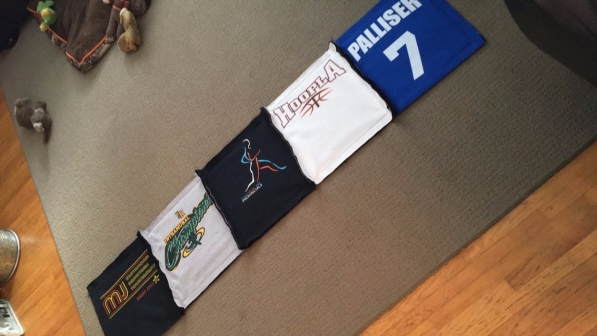


 pinning the shirts! I hope to finish the other three rows this week and then begin the real task of sewing it all together!! I’ll have to check out some resources for how to sew the seams together, without going over the ruffles I’ve created. I might also have to trim the edges of my squares…I don’t know if I want 1-inch ruffles all the way along the quilt yet or not, so that will be this week’s task!
pinning the shirts! I hope to finish the other three rows this week and then begin the real task of sewing it all together!! I’ll have to check out some resources for how to sew the seams together, without going over the ruffles I’ve created. I might also have to trim the edges of my squares…I don’t know if I want 1-inch ruffles all the way along the quilt yet or not, so that will be this week’s task!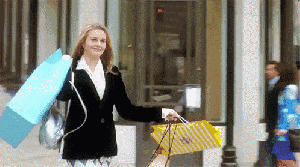
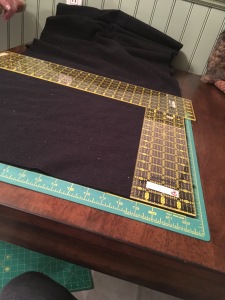 first, then sew all of my squares together to make my quilt. I followed
first, then sew all of my squares together to make my quilt. I followed 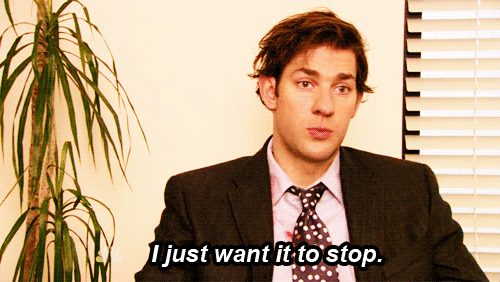
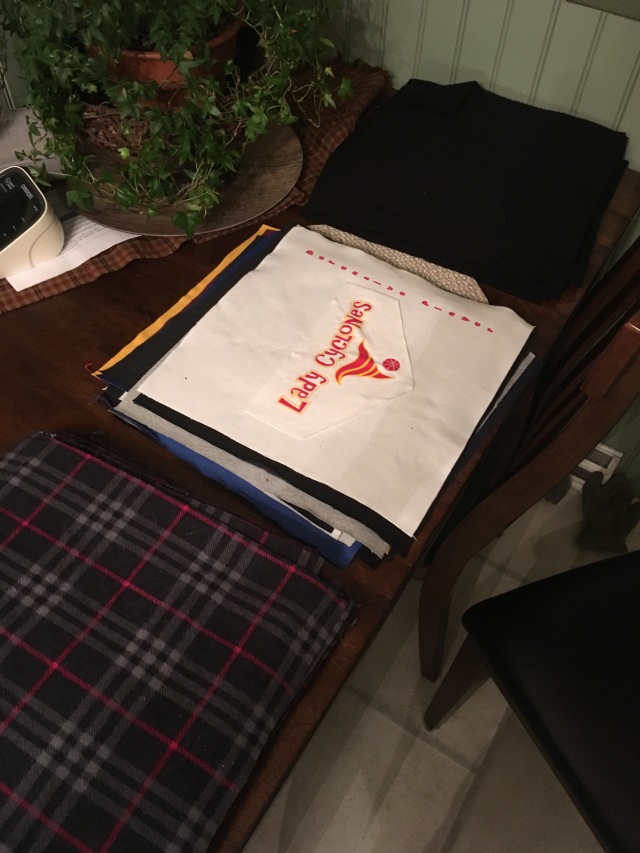

 My next move is to start sewing the flannel onto my t-shirt squares. This needs to be done individually, and then I sew the t-shirts in rows, and then sew the rows together. As I am beginning the stages of actually sewing, I am extra grateful that I do not have to
My next move is to start sewing the flannel onto my t-shirt squares. This needs to be done individually, and then I sew the t-shirts in rows, and then sew the rows together. As I am beginning the stages of actually sewing, I am extra grateful that I do not have to  Picture a rainy Saturday afternoon; most people would like to be curled up on the couch, watching movies, relaxing, reading a book, but not I! I spent the entirety of my Saturday cutting t-shirts and interfacing,
Picture a rainy Saturday afternoon; most people would like to be curled up on the couch, watching movies, relaxing, reading a book, but not I! I spent the entirety of my Saturday cutting t-shirts and interfacing, 




 After my
After my 

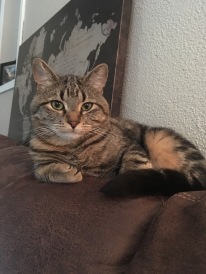 So this week for my learning project, I decided to start with the very basics. I’m ignoring the sewing machine until I can learn to fend for myself with a needle and thread. I’m going to be honest, I began this week not even knowing how to thread a needle. However, I persevered and learned on my own; turns out, it really isn’t very difficult and my clumsy fingers were able to handle this minute task.
So this week for my learning project, I decided to start with the very basics. I’m ignoring the sewing machine until I can learn to fend for myself with a needle and thread. I’m going to be honest, I began this week not even knowing how to thread a needle. However, I persevered and learned on my own; turns out, it really isn’t very difficult and my clumsy fingers were able to handle this minute task.